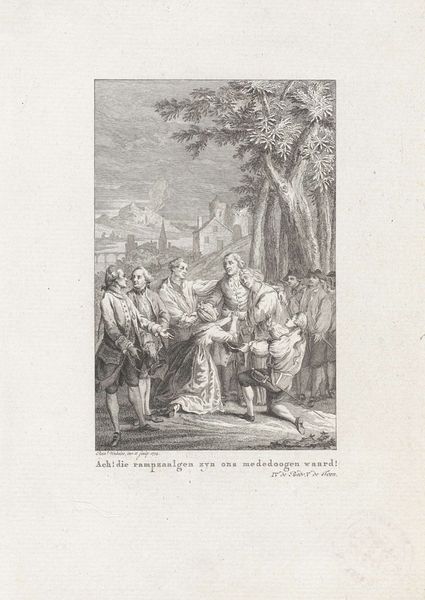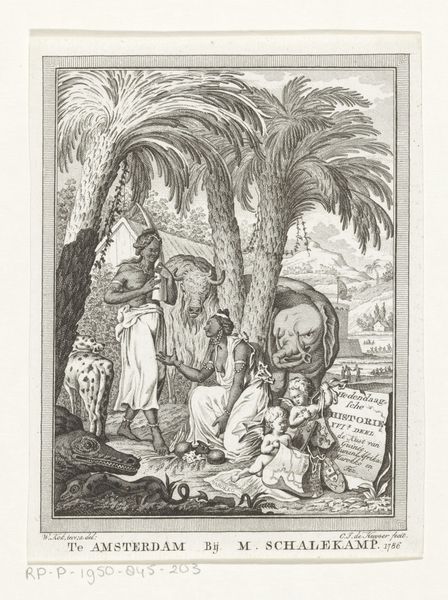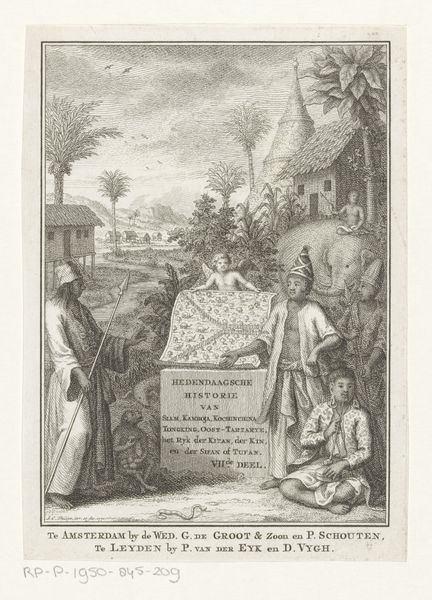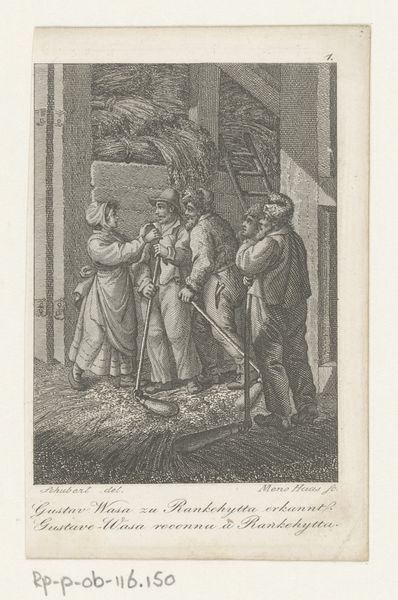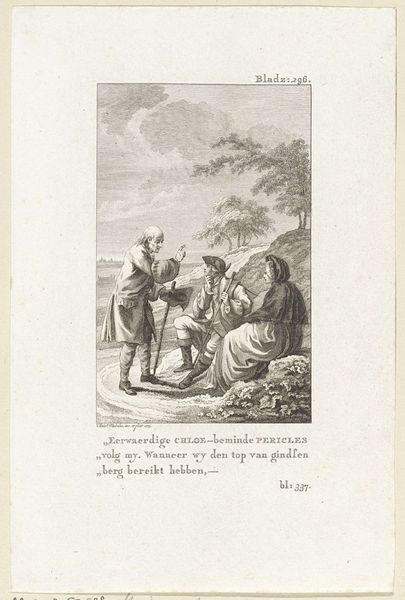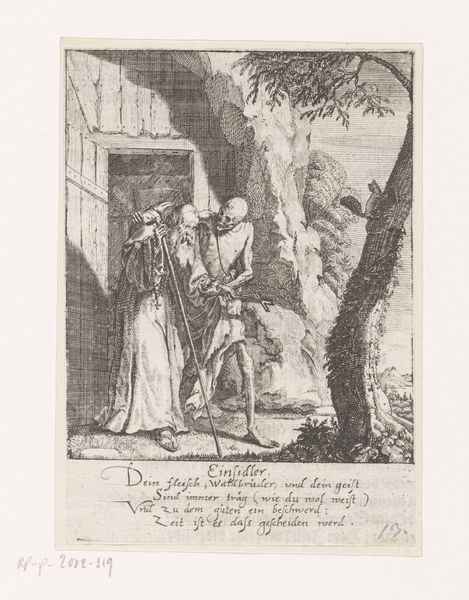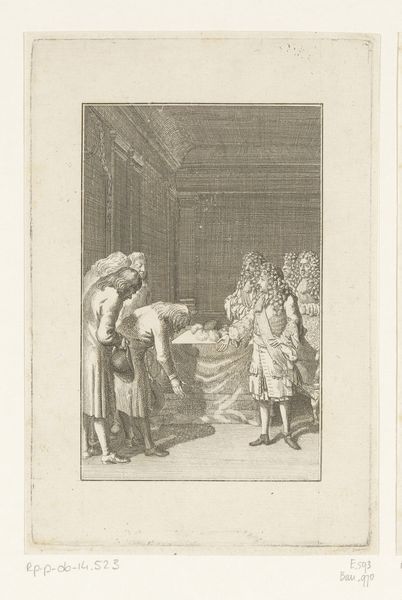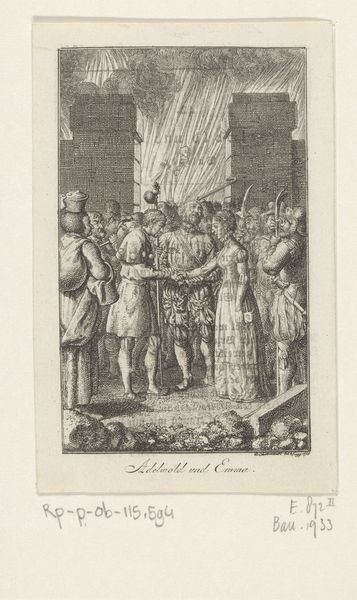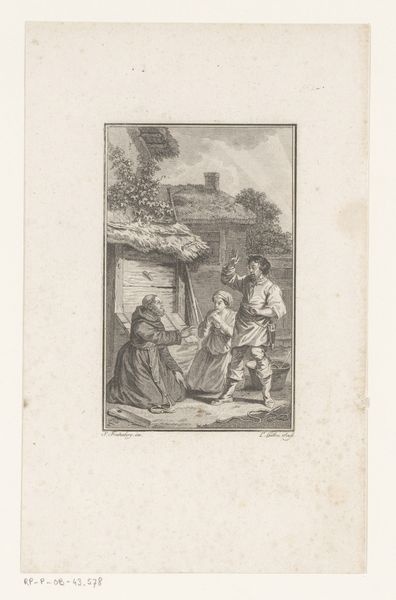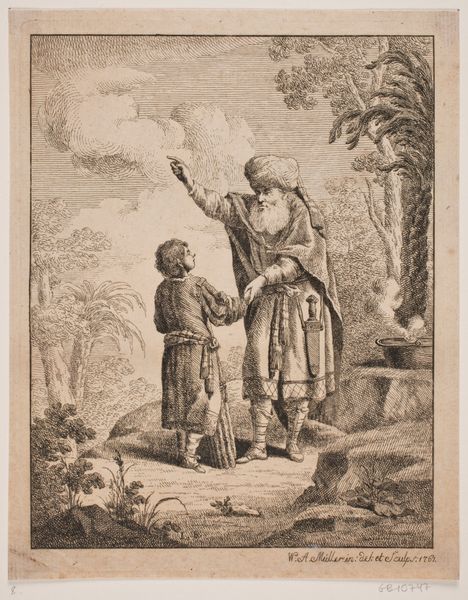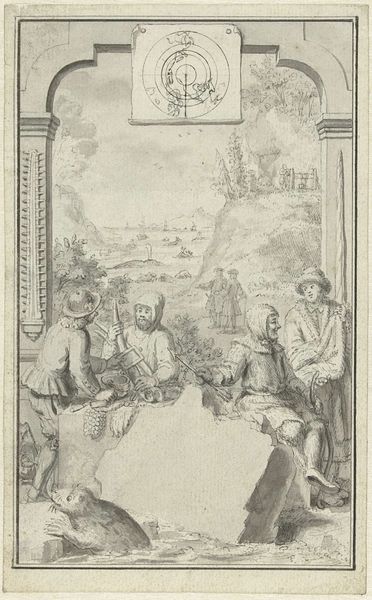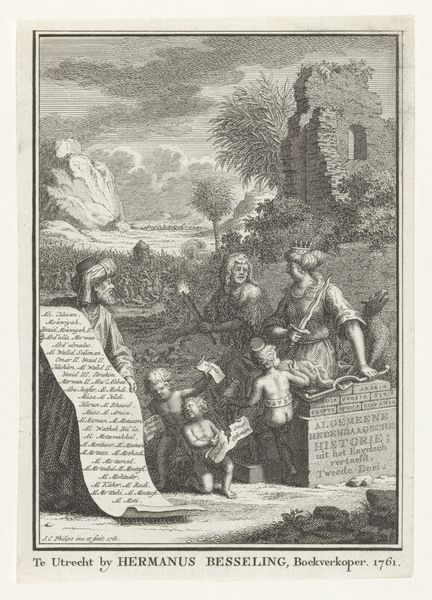
Dimensions: height 149 mm, width 88 mm
Copyright: Rijks Museum: Open Domain
Curator: Looking at this print, with its incredibly fine lines, you get the sense of peering into another world. The piece, titled "Mannen rond een schatkist," dates to between 1750 and 1792, and is attributed to Joseph de Longueil. It employs etching and engraving, creating a beautiful narrative scene. Editor: My eye is immediately drawn to the treasure chest itself, open and overflowing with riches, amidst this gathering of men. There’s an air of solemnity, even reverence, in their postures and expressions. It’s more than just gold; there is a deep symbolism at work. Curator: Indeed. The artwork, known alternatively as "Testament du Roi Houschlenk," reflects a style common in illustrating historical narratives. It presents an idealised vision, drawing upon, and also contributing to, societal perceptions of historical moments. There's almost a performance aspect visible. Editor: Precisely. Consider the setting, a cave or hidden sanctuary marked by a palm tree, a common symbol in many cultures to suggest peace or triumph. It suggests more than mere material wealth. It implies something sacred is being revealed. What about those figures reading the scroll? Curator: Contextually, we have to view the imagery through the lens of 18th-century artistic production and what constituted “history painting”. This would appeal to very particular class of collectors with an interest in history and the exotic “Orient”. The image exoticises a culture removed from Europe in a theatrical performance of kingship. Editor: Right, the composition stages the scene theatrically. It emphasizes a continuous flow of cultural memory and significance. It is more than an etching and engraving exercise, it carries with it collective stories we see depicted from the time the image was made to its significance even today. The treasure serves as a conduit, really. Curator: I concur, yet understanding its place within the market for historical prints informs our assessment, too. This image had a function in shaping the cultural dialogue of its era and continues to participate within the flow of visual and historical perception to the present. Editor: Very true. Examining the symbols, from the palm to the gold, the reactions of those assembled, we glean something essential. Art endures as visual echo. Curator: Precisely, by blending iconography and historical analysis, we reveal its multifaceted meanings across time. Editor: It truly offers more depth with a greater awareness of its function and history.
Comments
No comments
Be the first to comment and join the conversation on the ultimate creative platform.

